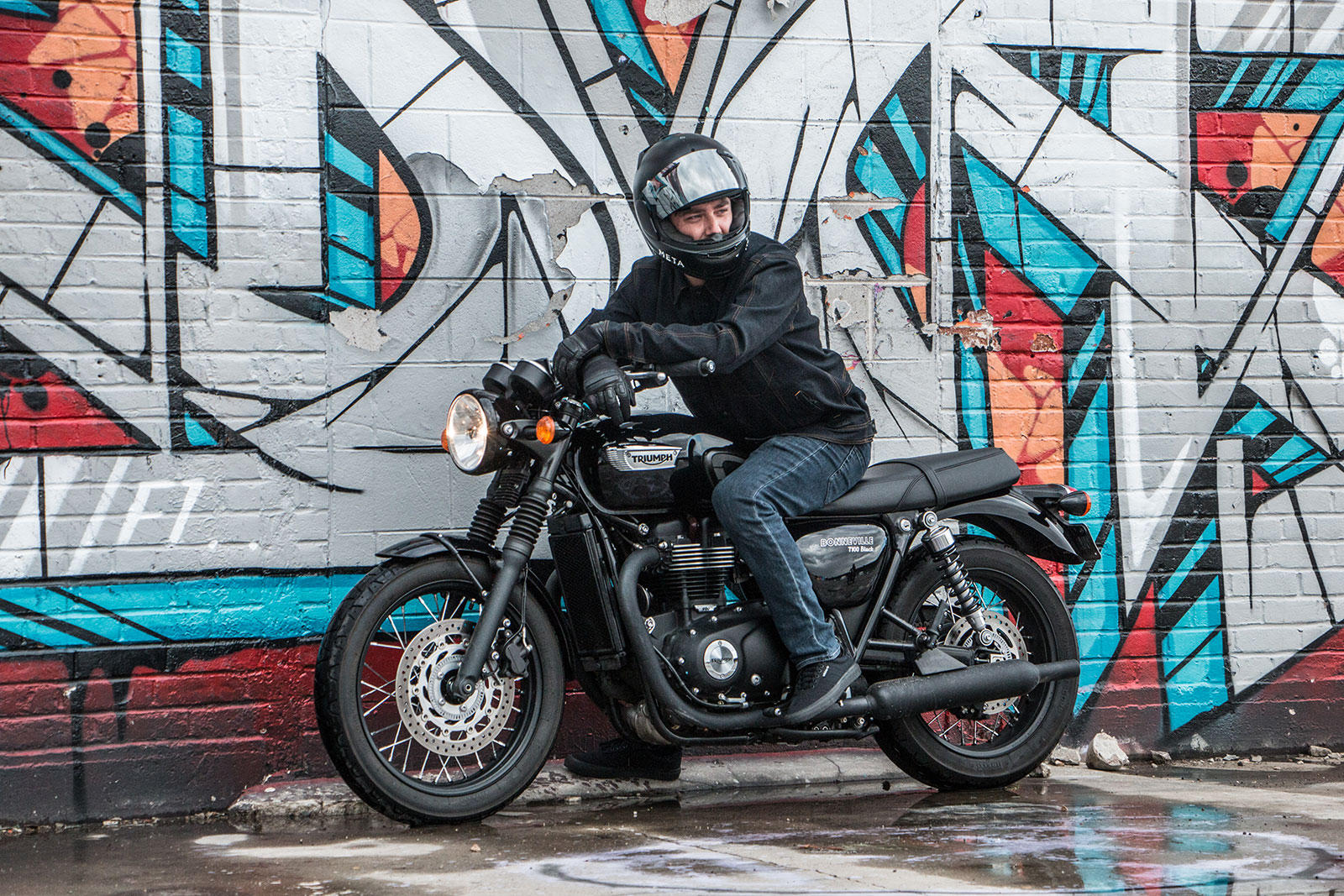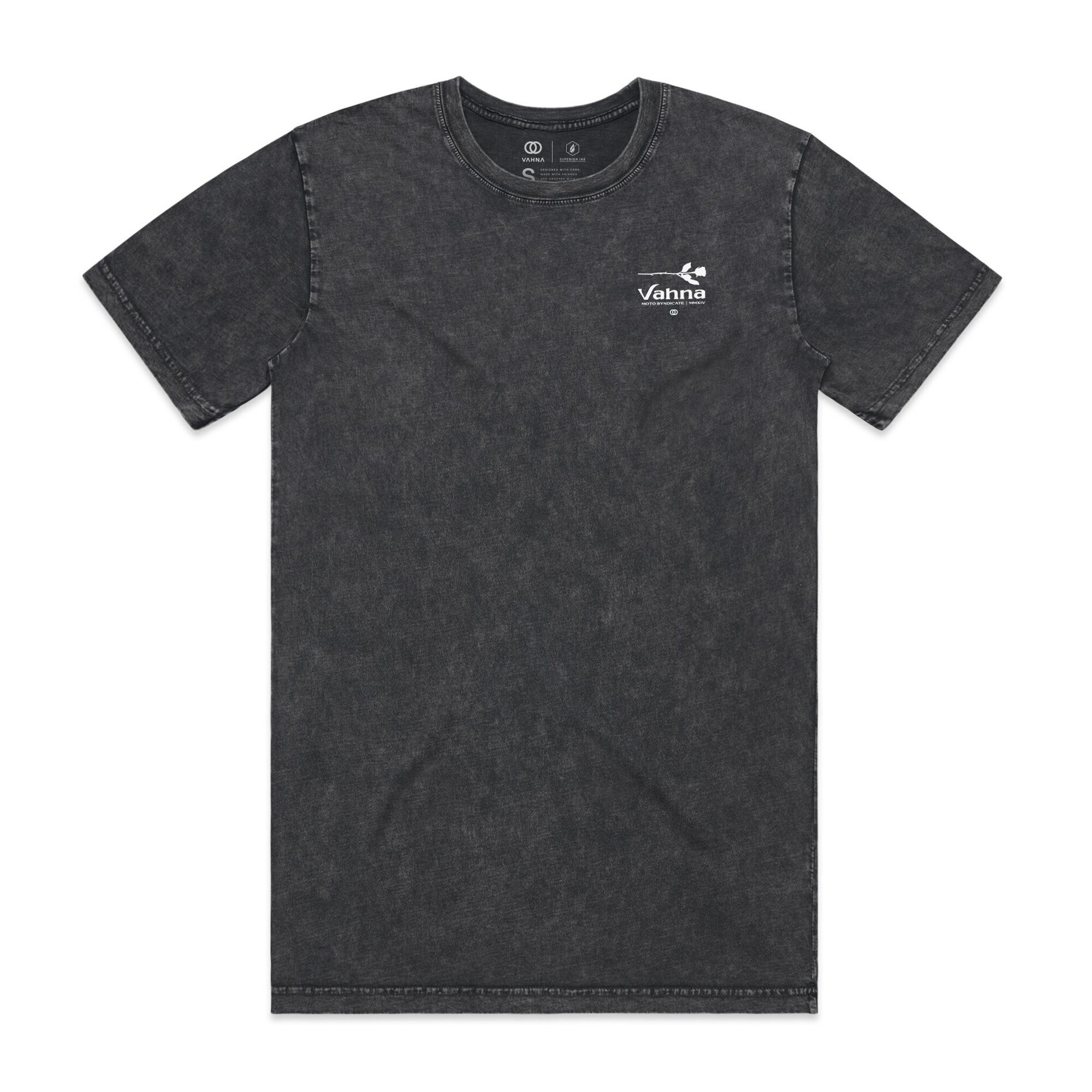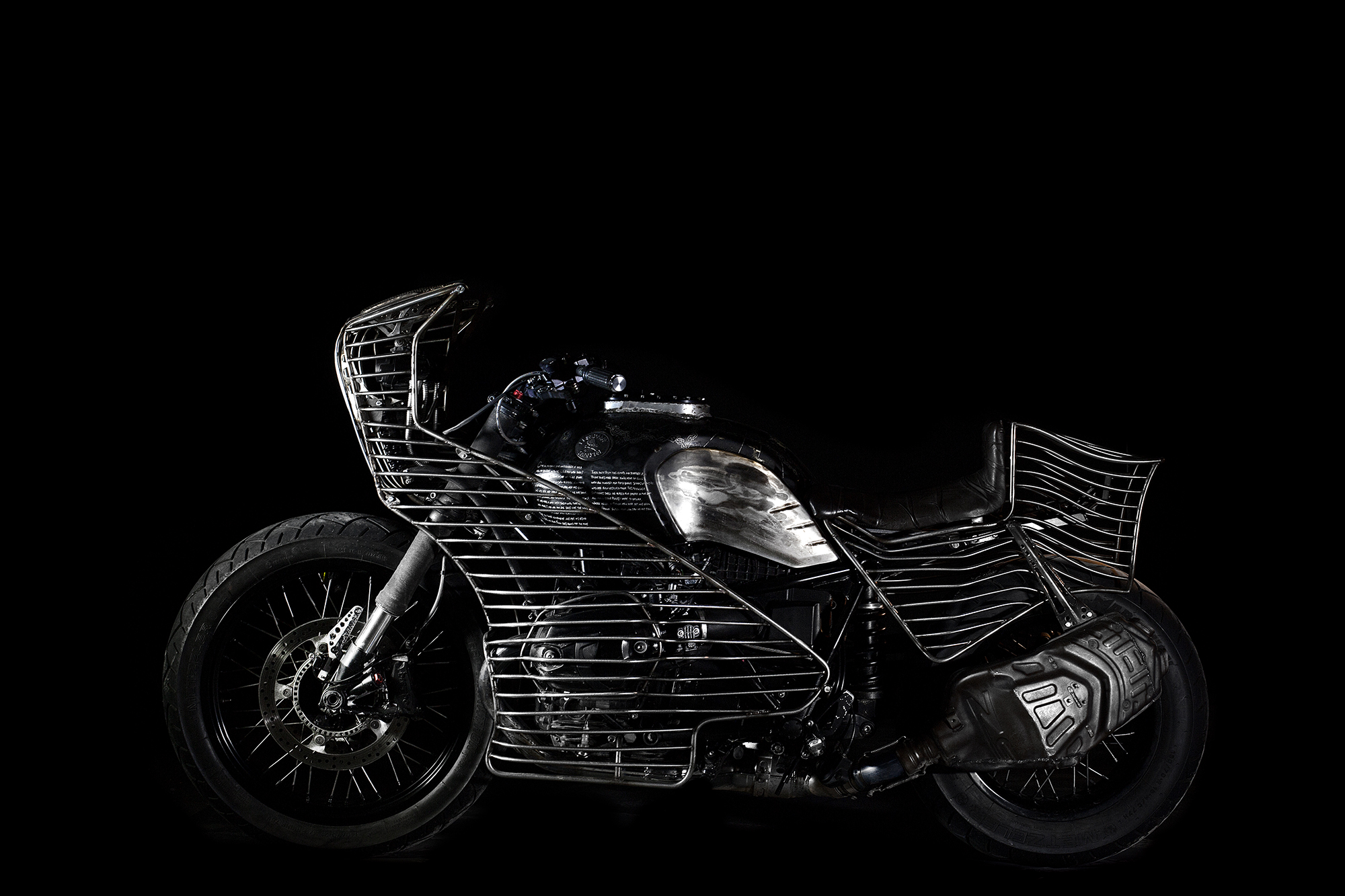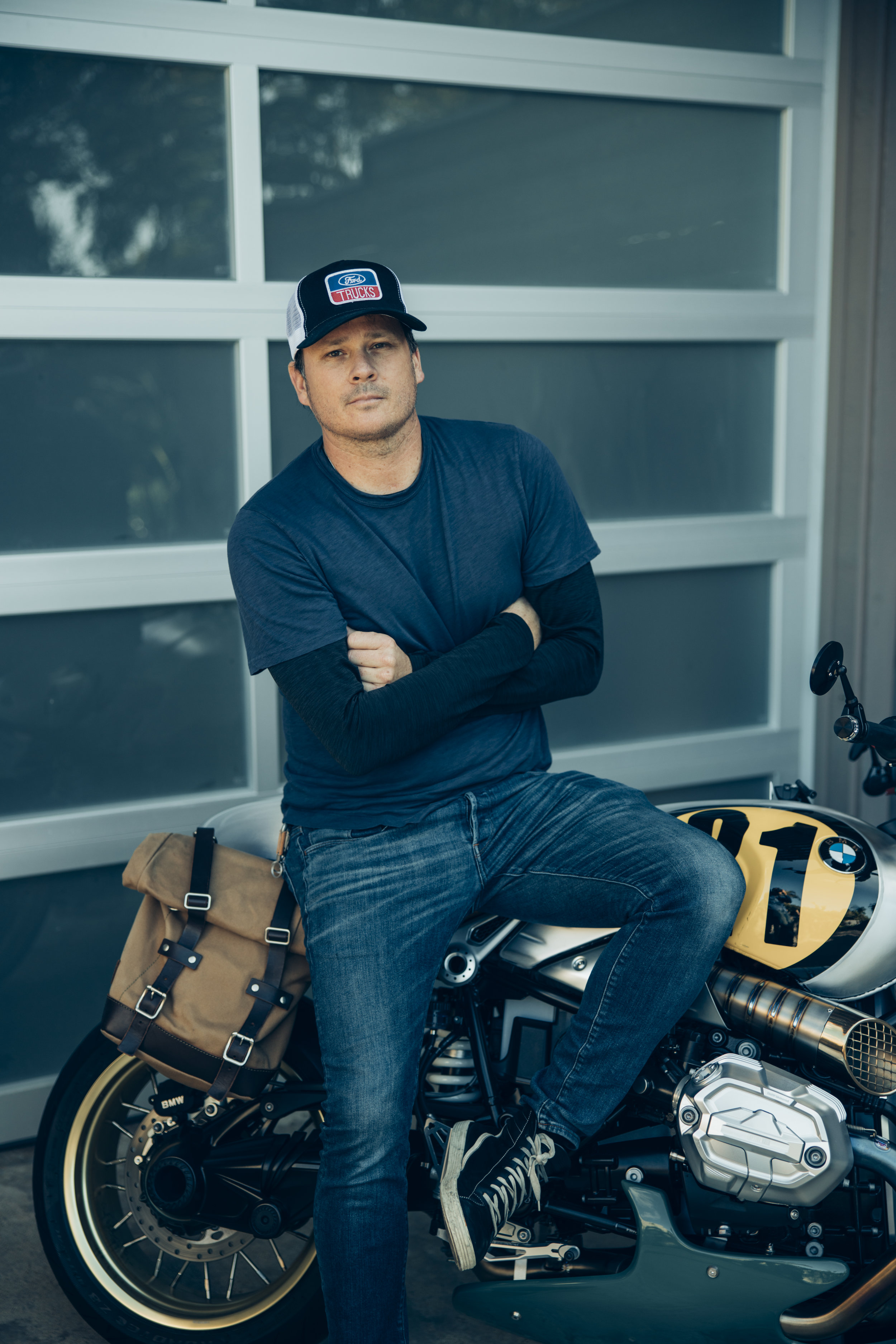Beers & Shit-Talking with Meatball
Interview by Greg Tomlinson | Photos by Brenden Lutes
Do you know Meatball? Perhaps you don’t know Jeffery Tulinius, aka “Meatball,” founder, proprietor and promoter of the Hell On Wheels Motorcycle Club, directly. But you know him. He’s that guy whom you can’t help but love. He makes, as he commonly says, “chicken soup out of chicken poop.” He would loan you a twenty spot when he has only five. He’d fumble the ball on the goal line and somehow recover it, run the wrong way and score the winning point when the clock goes to zero. He’s been messing around with motorbikes for longer than he’d care to remember and is passionate about them, and even more passionate about the friends and good times that come with them. Yep, he’s a self-admitted goofball, enjoys a cold one and could play a little simpler than he is. Make no mistake: He’s both, but neither. He’s a kneeboarder, which is a third-class citizen in the cool-guy beach culture, but he’s proud of it. Yep, he’s the lead singer of his band, Smiling Face Down, but you might mistake him for a roadie. Not a studied, schooled mechanic or a prize-winning, hipster fabricator, but he knows more — and has probably forgotten more — about the old machines he loves to wrestle with than most. On that note, old Meaty was reluctantly featured as a builder, the leading man in the cultish movie/documentary Brittown, even though he wanted the movie to be about his friends. Hell, he’s on IMDb! He loves any kind of a race whether he’s in it or promoting it, or not. There always seems to be, as he puts it, “three cannons pointed at his head,” mostly self-inflicted — but he always squirts through, sometimes a little roughed up. You may not know Meatball, but you know the guy. Heart of gold. Dare I say Eeyore? A ne’er-do-well in the most complimentary way.
So, Meatball, you were Southern California born and raised?
No, not raised. When I was 10, we moved, which messed me up. My dad took a job at NASA, and we had to move to Virginia. It was rough. But then we moved back to Huntington Beach the week before I started high school, and I didn’t have any friends.
You didn’t have friends?
Not a single soul. I walked into school as the new kid from Virginia, backwards as can be.
What year was that?
’77, I think. My dad worked all the time, so I took my TL 125 and rode through the oil fields towing my surfboard in a wagon behind me. I bought the surfboard, and I didn’t even know what I was buying. Turns out it was a kneeboard.
Did you fabricate the cart yourself?
I think I just towed a wagon with a piece of string, so if I stopped quickly that thing rode up my back. It wasn’t very good, but it got me through the oil fields every morning, and that’s how I learned to kneeboard.
There aren’t many things lower than being a kneeboarder…
Boogie boarder, maybe. But even boogie boarders make more money [laughs].
Anyways, I went to high school and was on the surf team doing contests. I really just wanted to ride motorcycles, but I couldn’t because I couldn’t drive to get there. So in high school, I ended up kneeboarding instead. I was doing contests, and somehow, I ended up on the national surf team.
Did being a kneeboarder make you scrappy and fight for what you wanted to do?
Nah, I was just a goofball and I got lucky. That’s how everything is. I kind of wander into things and just end up places.
So how’d you get into motorbikes?
Well, I was always into motorbikes, because my dad rode them. I just couldn’t go because he was always working, and I couldn’t drive. But then, once I had my license, it started taking off, and I just stuck with it. We had Bultacos and Triumphs and stuff. I rode street bikes from age 16 on.
Shit, Hondas were cheap at that time, too.
Well, I just like Triumphs. But my first bike was a Honda, and when I rode home my dad was like, “Where is your helmet?” and I was like “I’m not going to wear a helmet. Why have cool hair if you’re going to wear a helmet?”
Somehow, I eventually started collecting Triumphs and old cars. I don’t know how I did that.
Did you have money?
No, I didn’t have any money.
Then how did you do it?
Nobody wanted a Triumph back then. Everyone rode Harleys and would look back and just see a bunch of smoke billowing from my bike. I got into Triumphs because they were cheap. Then, later on, everybody started liking Triumphs. And I had been broken down so many times that I had learned how to work on them. So eventually I started a business fixing Triumphs after I got laid off from my suit-and-tie job.
Wait, you wore a suit?
Yeah, I rode my motorcycle in a suit. I worked in AutoCAD. I went to school to be an engineer, but I never finished. I was in engineering school to be on the surf team, and once I wasn’t on the surf team anymore, it was like, I don’t want to be going to school. That’s when I got a regular job.
How did you get the name Meatball? Because you’re not a fat dude; you’re tall and skinny.
It was just, “Where’s that fuckin’ Meatball?” I was always lost. Usually in the bushes or drunk. I got the name because I was never where I was supposed to be.
What’s your favorite bike of all the bikes you’ve owned?
I think I gotta stick with the Triumph twins and BSA singles.
What is your favorite hairstyle?
You gotta have punk rock style. Punk rock is where it’s at.
Have you ever been in a parade?
A parade lap.
What is beautiful to you?
A baby-blue Triumph twin. Maybe an old sports car. A nice wave. A string bikini.
When did you start racing?
I started riding and racing in ’93. I was riding around Huntington and started racing in the desert, also motocross and dirt track. I was racing at Willow Springs a lot. Almost every weekend. It was hot and windy out there, and we lived on Keystone Lights and hotdogs. Then I started racing the scrambles in ’95. I rode a BSA single, a lot of Bultacos, and whatever was cheap. I just rode whatever was running at the time. I was racing a lot up until 2001, when I cracked my head, then I stopped.
You cracked your head? What do you mean?
I had a grand spectacular crash at Glen Helen and had brain hemorrhaging. I lost my memory for a month. So that was the end of racing for me.
How did you crash?
I don’t remember; I lost my memory [laughs]. They hauled me off in the meat wagon.
So was that around the time you opened up your own shop in Costa Mesa?
No, I opened up the shop in ’97. We were racing and wrenched on bikes a little, but it was mainly partying. I’d get an eviction notice every Monday after the weekend.
How did you open up a shop if you didn’t have money?
I made just enough. It was just me, and I didn’t have kids or anything.
What else did you do out of that shop?
We were selling jerseys when we started racing, and that’s when the striped jerseys first came out. Black Flys was big back then, and they would give us goggles and screen my shirts for me. That’s about the time when the name “Hell On Wheels” came about. I don’t even know where it came from, but it was on the back of all our jackets.
So were you trying to be outlaws with the jail-striped jerseys, and “Hell On Wheels” on the back of your jackets?
I don’t know if I was trying to be an outlaw; we were just partying. We were having a good time. When we would go to the races we would bring 20 or 30 people, and bring our own bar, so after the races we could have a good time.
So, essentially, “Hell On Wheels” became a combination of wrenching on bikes, slinging merchandise and whatever kind of stuff you could sell, and also promoting races and events?
Yeah. I like to get people together, but it’s all about the party. That’s how it’s always been. At our races everyone pats me on the back and says, “That was a great race.” But it’s really not me — it’s my buddies and the people that come; they put on a good show. They’re all nice, and it always turns out good. It’s always been like that. It’s always been about the people.
Have you ever been married?
Yeah, that didn’t work out so well … That was growing up, and it wasn’t in my cards to grow up. Growing up was not good to me.
After parting ways with the old lady, you took the plunge to open up a retail shop in Santa Ana, right? All the while you’ve got two kids that you’re raising. How was it juggling kids while trying to run the shop?
Kids are the easy part. The shop was a nightmare. Being married to a building wasn’t for me, either. That’s why they call me Meatball, remember? I’m never where I am supposed to be. So the retail thing, being open to the public, didn’t work too good. You’ve got to be organized and have it together, and I wasn’t together.
So you moved to a new little spot in Costa Mesa?
Yeah, it’s like a junkyard. An indoor junkyard. It’s a better situation for me because it’s more of a hideout where I can go to get things done. But really, the only time I seem to get my shit together is at the racetrack when I’m hosting races. And that’s just because I want everybody to have a good time. That’s the most organized I get. I do my best, and people have fun.
It’s a good community event.
It’s just good fun, is what it is. And nice people. And nobody is worried about who got last or first; everyone’s just having a good time.
Tell me more about the Hell On Wheels races.
I throw some races on the big TT truck track, and we race some scrambles tracks and some dirt tracks. We have a hill climb, too. When you get 8 or 10 Triumphs on the starting line, it sounds great. Not only does it get the people stoked because the bikes are revving their hearts, but also the riders are stoked. There’s people-watching; there’s an interaction like when you’re at a rock show and everybody’s screaming and yelling. Shit, when everybody’s screaming and taking their tops off, pretty soon you’re playing some mean rock ’n’ roll. It’s the same with racing. They’re probably not the best riders, but they have huge hearts, so they put on a great show. I know most of the guys riding, and I can tell you they are all riding over their heads trying to win a $10 trophy. It’s great stuff.
What do you enjoy competing in most?
Well, I started out dirt tracking because it’s easy, like kneeboarding. You just go around in a circle. But, man, if I could ride motocross good and was in shape and my arms didn’t fall off because I’m tired, I guess motocross is the most fun. I always liked motocross as a kid, but did dirt track because it’s easy. Road racing is fun, too; it’s just expensive and you never get to do it.
So what’s next for the races?
Retirement races for retirement folks. Keep it common-man’s racing and not try to compete with all the big-shot races. Keep it fun. We need to bring that back, where everybody gets along and everybody likes everybody.
Do you watch Supercross or any other professional racing?
I like all that stuff, but it’s hard to find the damn races.
What do you mean? They are on TV. Do you have a TV?
I don’t, actually. We go to Hooters and watch the races. I like it; it’s just harder to follow when you have to go somewhere to watch them.
What are you best at?
Going to bars and telling stories. I’ve done a lot of stuff.
Describe your bedroom.
I’ve been on the couch. You know how old people sleep on the couch? I’ve been on the couch a lot lately.
What makes you angry?
I don’t get angry. Only Meatball makes me angry when I do dumb stuff. And that happens all the time.
Have you ever been in a fight?
Yeah, I get beat up a lot. And in front of a whole bunch of people.
What’s your most prized possession?
My kids, of course.
What’s your favorite food?
I like chocolate cake with vanilla ice cream.
What’s your favorite movie?
I love On Any Sunday, but that Butch Cassidy and the Sundance Kid movie is kinda cute.
Did you ever wet your pants?
I shit myself at the bar one time. Threw my underwear in the trash and sat back down at the bar.
Have you ever been to jail?
Yeah, I’ve been to jail. Wearing a woman’s pink sweater and a flask in my back pocket.
Out of everything you’ve done, what has been the best experience so far?
Everything that I’ve done has been great except for growing up. The growing-up thing sucks. But my kids are my best trophies. They are incredible.
What do you like most about motorcycles?
When you start up a bike and it makes you smile. And when you’re hot and dusty and drink a beer, you smile — you know? It’s kind of a simple thing.
I want to start riding more, but I’m worried about getting hurt. I’m 98 years old, so ...
You’re not 98.
I would come apart like a cooked chicken.
So what’s next for Meatball?
I think retirement. I’m going to scale everything back.
You ain’t that old.
I gotta retire and get the kids into college. I gotta get my mess cleaned up.
How are you going to do that?
I don’t know.
In closing, what are your words to live by?
You only live once, so just do what you want to do, and hopefully, get lucky. I’ve just kind of got lucky with everything I’ve done. Keep good friends and just have fun.






































































































































































































































































































































